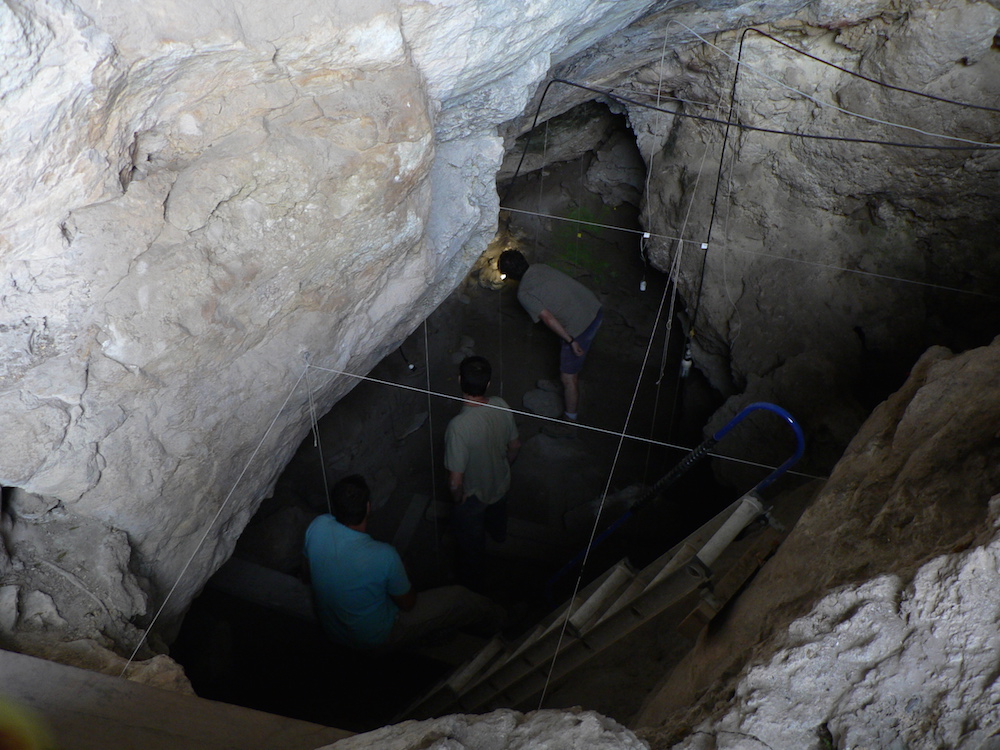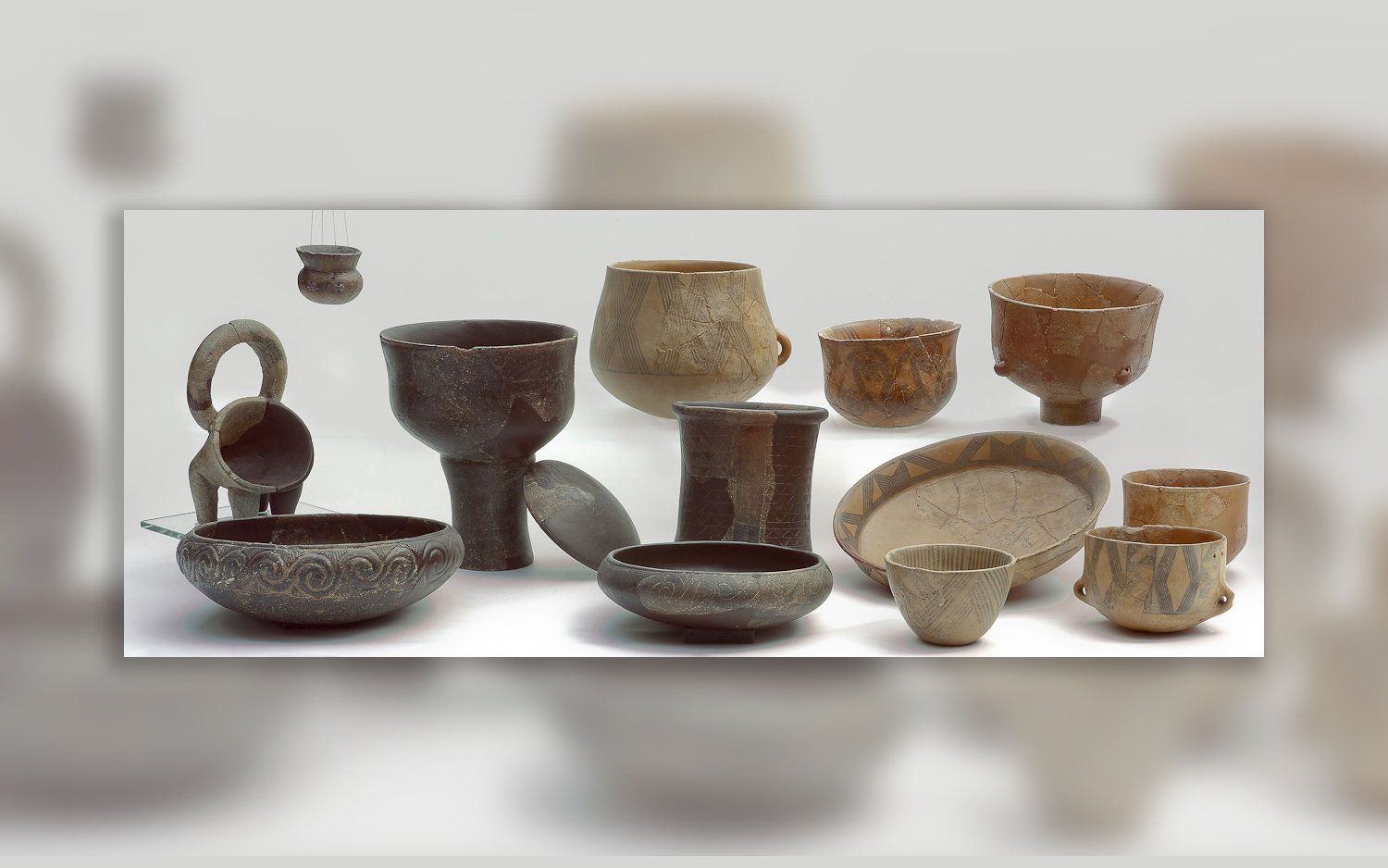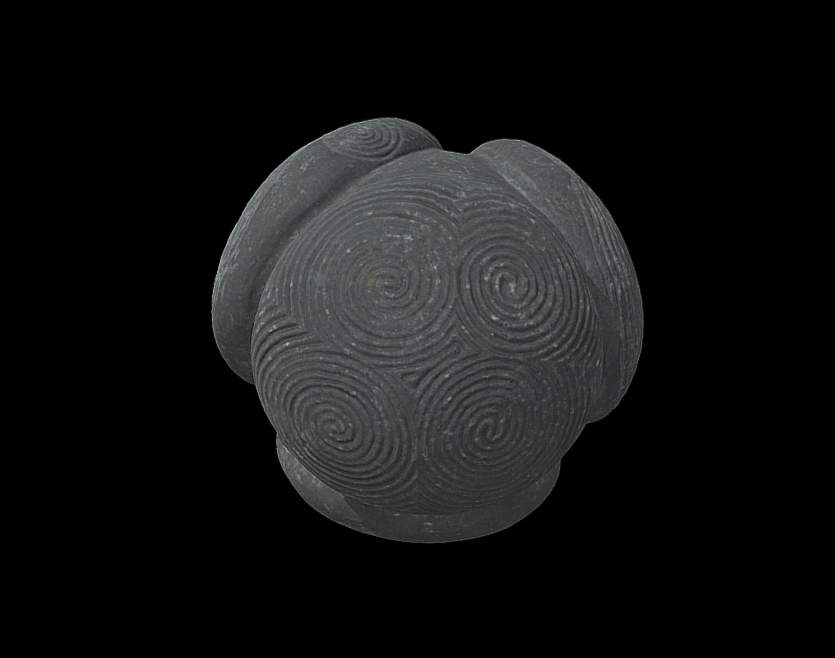Back to the Stone Age: 17 key milestones in Paleolithic life
The Stone Age may not have been "The Flintstones," but there were definitely caveman qualities to it.
Cannibals!

Human cannibalism has probably existed throughout human history, and the Mesolithic period was no exception.
Some of the earliest evidence for prehistoric human cannibalism in Western Europe has been found in caves near Alicante, in southern Spain.
Human bones found in the cave, which dated to between 10,000 and 9,000 years ago, show signs of having been cut with of stones and gnawed on by other humans. Human bones were also found in fossilized human feces, known as coprolites, that were found in the cave.
There's clear evidence that human cannibalism took place within the cave, the researchers said. But they can't tell if it was some kind of ritual — a funeral rite, for example — or simply because the cave's inhabitants were hungry.
Neolithic Farming Revolution

The Neolithic period, or New Stone Age, is thought to have begun about 12,000 years ago in the ancient Near East, where farming may have been first developed.
The advent of basic farming techniques — such as domesticating the first crop plants and keeping herds of cattle, sheep, goats and pigs — became a revolution that swept through human societies around the world. Neolithic farming techniques were relatively slow to take root in Europe, however, and probably emerged around 6,000 years ago.
DNA studies of bones found in a cave in Germany in 2004 suggest that Neolithic farmers may have lived alongside hunter-gatherer societies for around 2,000 years — but they seem to have lived separately, despite occupying many of the same regions.
Get the world’s most fascinating discoveries delivered straight to your inbox.
Cheese and beer

Once farming took hold of humanity, the next step was coming up with interesting new types of food and drink, which explains why some of the oldest evidence of ancient cheese and beer dates from this time.
What's thought to be the oldest cheese in Europe was found in the Balkans region — a gateway for the spread of Neolithic farming techniques from the Near East. This cheese was made by Neolithic farmers living near the Adriatic Sea, who had packed soft cheese, probably made from cow's milk, into clay pots for storage about 9,000 years ago, a 2018 study found
Scientists have also found evidence that beer was brewed from grains at a Neolithic site in Turkey more than 11,000 ago. In fact, researchers don't agree if the cultivation of grains was mainly for baking bread or brewing beer or for ritual purposes.
Neolithic fashion

By the time of the Neolithic period, animal skins were in plentiful supply for clothing, thanks to the domestication of animals. The first woven textiles came about 2,000 years later, in the Near East about 6,000 years ago, and a few thousand years after that in Europe.
The clothes found on famous 5,300-year-old frozen mummy of Ötzi the Iceman — found by hikers in the Tyrolean Alps in Austria in 1991 — were made from the skins of both wild and domesticated sheep and goats, according to genetic studies.
The researchers found that the skins had been scraped, heated and treated with animal fats until they turned into leather; they were then sewn together with thread made from tree bark and needles made from bone.
Ötzi also wore a hat made from the fur of a brown bear, shoes stuffed with grass and shoe laces made from the skins of wild cattle.
Family burial

Carefully burying or disposing of the dead is one of the things that makes us human. Some of the earliest evidence for burials dates to about 250,000 years ago. These burials were found in the Rising Star Cave in South Africa in 2013, and attributed to the archaic human relative Homo naledi.
Archaeologists have also found evidence that other archaic human species buried their dead, including the Neanderthals, the closest relative of modern humans. Scientists still argue about a famous find in 1908, of the "Old Man" of the La Chapelle-aux-Saints, and whether it truly represents a Neanderthal burial.
By the Neolithic period, humans were taking great care in the burial of their dead. In 2005, the burial of a family of two adults and two children was found in a Neolithic graveyard in Germany that held a total of 13 bodies. Cuts on this family's bones indicated they were killed while defending themselves against a violent raid.
Abstract art

During the Neolithic, or New Stone Age, new types of abstract art popped up around Europe. Hundreds of highly decorated carved stone balls, dating to around 5,000 years ago, have been found throughout the British Isles, but especially in northeastern Scotland and in the Orkney Islands.
Archaeologists have argued about these objects since they were first found in the 19th century. For instance, some think the balls were used as weapons, while others have proposed that they were weights for fishing nets. But now, it's thought that Neolithic people carved these hand-size rocks for decoration.
The patterns of the carved Neolithic stone balls vary widely, but show some similarities depending on the region where they were found. One of the most famous is the Towie ball, which was found in Scotland in 1860. It is decorated with spiral patterns that are very similar to rock carvings found at the Neolithic tombs at Newgrange in Ireland.
Standing stones

The most dramatic monuments of the Neolithic period are the massive stone structures found in Britain and parts of the European continent. The most famous is Stonehenge in southern England, but thousands of Neolithic standing stones, known as megaliths, are found throughout the British Isles and Northern Europe. Ancient megalithic structures have also been found in the Middle East, Africa, Asia and even on islands in the Pacific Ocean.
These giant stones were likely erected for ritualistic purposes, as sites such as Stonehenge show alignments with astronomical events, including the rising of the midwinter sun. But the origins of these mysterious monuments have been lost in prehistory.
Archeological research published this year found that one of the central circles of Neolithic standing stones at Avebury, about 25 miles (40 km) north of Stonehenge, was originally centered on a single Neolithic house. The researchers suggest that the Avebury stone circles were created in later centuries to commemorate that house, and that Avebury itself may have predated Stonehenge.
Nothing is known about the people who once lived in the house at Avebury, but the researchers think it is likely that they represented an important lineage of people — an elite Neolithic "one percent."
Tom Metcalfe is a freelance journalist and regular Live Science contributor who is based in London in the United Kingdom. Tom writes mainly about science, space, archaeology, the Earth and the oceans. He has also written for the BBC, NBC News, National Geographic, Scientific American, Air & Space, and many others.
 Live Science Plus
Live Science Plus





